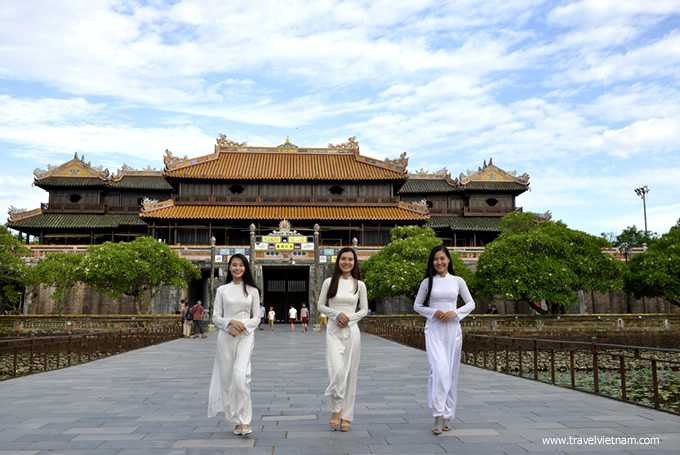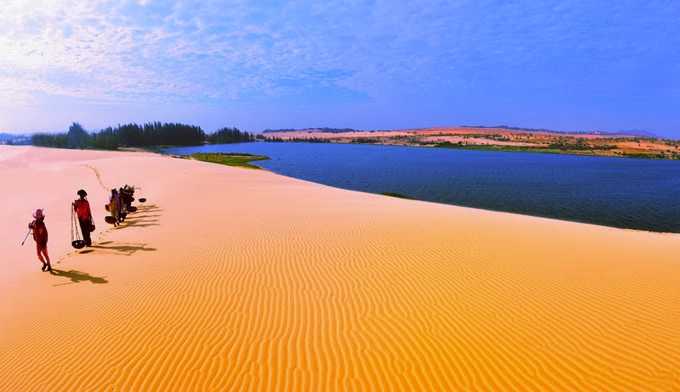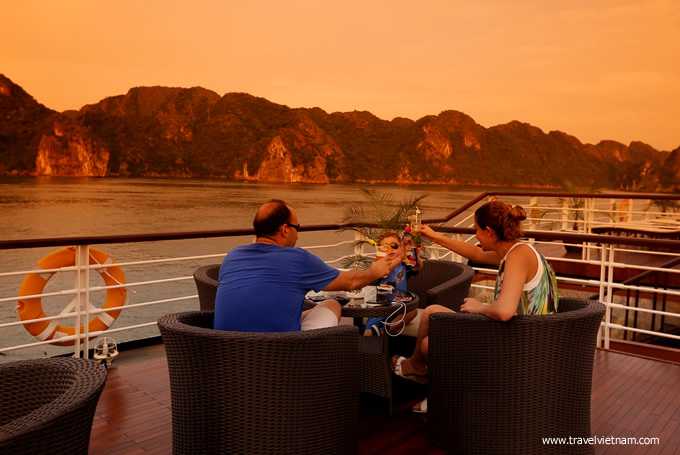
Although Vietnam is situated in the tropics, it actually enjoys varying weather conditions depending on the region where you are heading: North, Central, Central Highlands, South… The reason is the length and topography of Vietnam that covers different climate zones. As such, any time of the year can be the best time to visit Vietnam.

Broadly speaking, the weather in Vietnam is dictated by two seasons – the Southwest monsoon from April to September and the Northeast monsoon from October to early April. People often equate monsoons with rain, but that is only partly the case in Vietnam, as a number of regional variations affect the rain. What is worth remembering though is the Southwest monsoon is warm and wet and the Northeast monsoon is cool and not so wet. As far as planning goes, the easiest way to get your head around it is to break up the country into three areas – the North, the Centre and the South. Temperatures are fairly constant throughout, with the exception of Hanoi and the far North (which can be very cold in late December and January) and the Central Highlands (which can be slightly cooler than the rest of the country year-round).
SEASONS
Spring with its cool climate is the best time to visit the north. It is during this time when traditional festivals such as “Tet” or the Vietnamese Lunar New Year take place providing an opportunity to enjoy the people, food and other fun activities.
The months of May to early September are considered summertime, which means visitors can expect hot weather. June and July are usually the hottest months with temperatures reaching up to 40°C, which is slightly over 104°F.
Autumn time provides a pleasant weather. As this is the start of a new school year, travelers can enjoy the sights of young Vietnamese girls in their traditional costume known as Ao Dai not only walking the streets but also riding their bicycles when going to school.
The winter season in the North Vietnam is also considered the dry season. It normally spans from November to April. The cold weather is due to the monsoon winds blowing from the northeastern section.
During this time, visitors can experience cloudy skies and light showers. Although in the tropical region, northern Vietnam’s winter temperature can get quite low at 13°C or nearly 55°F. Colder weather can be experienced notably in the moutainous areas such as Sapa, Ha Giang, Cao Bang where temperature can get as low as 2°C or 35°F and even snow and ice!
REGIONS
North Vietnam
This part has basically two main seasons – warm and cold or rainy (from May to September) and dry (courtesy of the northeast monsoon from late October to April).
December and January in particular can get quite frosty in the far north of Vietnam – pack accordingly. This time of the year can also see heavy mists that can run for days – these can reduce visibility in places like Sapa and Halong Bay to frustratingly short distances. The wettest months of the year in Hanoi and other Red River Delta provinces are July and August, the driest, December and January.

Central Vietnam
Central Vietnam is kind of a transitionary area climate-wise from the north to the south. Those visiting the coastal areas can experience favorable weather throughout the year. It should be noted, however, that the late part of summer in these areas couldhave heavy rain and typhoons. Rains normally occur in August, October, November and February.
The coastal areas in the central part of the country often have dry weather. Summer in these lowlands, which runs from April to October, can be hotter than the other regions. The latter part of summer, however, is the time when typhoons and storms find their way into these areas. Much rain also occurs in the central mountain areas.
The hot climate in the central parts of Vietnam is caused by the southwest monsoon that comes from Laos. What happens is that the winds that pass the central province of Hue get blocked by the mountain range resulting in warmer weather in the Danang area and further south. This weather condition not only produces much heat but typhoons as well, which bring long periods of rain notably during the months of November and December.
A most unique experience with regards to Vietnam climate can be had from December to March in Hai Van pass. This is because if you stand at the peak of this area, which is actually a cliff extension that divides Hue and Danang, you can literally enjoy both winter and summer at the same time.

The hottest weather can be experienced in the cities of Nha Trang, Quy Nhon and Mui Ne all throughout the year. Travelers who want to escape their country’s cold weather can enjoy a vacation in this part of Vietnam any time they want.
South Vietnam
A hotter weather is normal in the flatlands as well as in the southern part being situated in the tropics. In Ho Chi Minh City and Mekong Delta for instance, temperatures are steady at 22°C or about 71°F, to a peak of 36°C, which is about 89°F for the most part of the year. The southern part of Vietnam generally has rainy season for most parts of the year particularly from May to October. The rains, however, don’t occur the entire day so it’s still possible to enjoy your tour of the area. It normally gets dry easily after the rain, so in case you’re planning to visit the south, it’s best that you bring along some raingear for protection.
WHEN IS THE BEST TIME TO VISIT VIETNAM?
Vietnam is a country which benefits from having three different micro climates, making it a great year-round destination, but if you are still concerned about a question “the best time to travel to Vietnam“, you may see our advise as below:
– Travelers planning a long tour of Vietnam covering the north to the south should schedule their trip between the months of November and April. This period provides favorable weather that will let you and your company enjoy the sights, people and food of the country. It is the best time to visit Vietnam between these months.
– Those who wish to experience the great beaches and water sports activities should choose the central coast of Vietnam. It is here where the sandy beaches such as Quang Binh, Lang Co, Danang, Quy Nhon, Phu Yen, Nha Trang, Vinh Hy, Mui Ne… and wonderful resorts are situated. Of course, the summer season is the best time to hit the beach and the months of May to October are strongly recommended.

